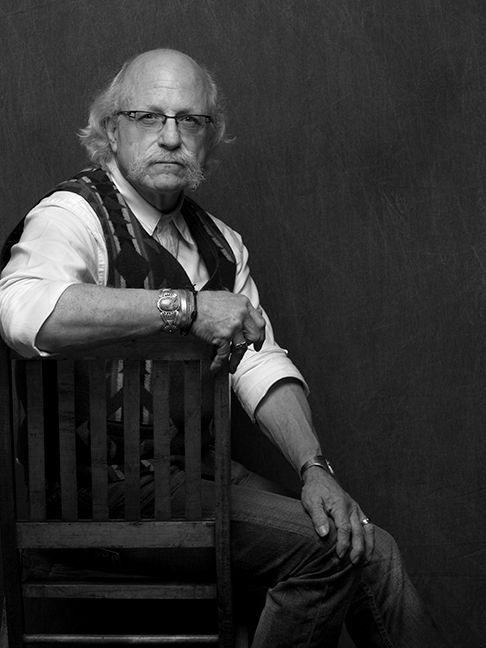
Photograph by David Moog
About R.H. Stamps
For many observers, the meaning of the work of Richard H Stamps defies description, possibly a better word is it defies direction. Other artists such as Ansell Adams, Edward Burtynsky, Richard Avedon, Milton Rogovin and many others have had accomplished artistic careers in photography pursuing a specific narrative. Stamps on the other hand has not pursued a specific subject or theme. He’s been criticized for this by curators, art dealers, collectors and sometimes other photographers.
Many have struggled with Stamps’ work suggesting it’s quirky, eccentric, all over the place.
Being able to reflect on an artist’s intent is more easily done by experiencing the artist’s body of work when it focuses on a specific genera, theme or process.
It is easier for critics to derive or at less speculate on meaning by having a context provided by individual works that resonate with each other. Sometimes children playing in the street scene, an upside-down portrait of a woman’s face, yet another of a stream of blurred color shot of a passing truck; a reverberating context cannot be found, unless it is the artist himself.
I have observed Richard Stamps’ practice for one and a half decades and have struggled to find a central theme or interconnecting technique. I realized I was looking in the wrong place.
What binds Stamps’ various themes which include characters, light, and rural and urban scenes, is the artists engagement with the world around wherever he may be. In a recent body of work resulting from a visit to Las Vegas 2016, Stamps reveals his fascination and his interaction with the world of disparate experiences.
Visiting these images, one may conclude they are the work and interests of many artists having little common connection. We are programmed to find meaning at patterns and themes. Finding none, many move on.
The lamp set askew in a hotel room, a grinning chauffeur looking from inside his car, and the night traffic around the Hoover Dam are Stamps pauses to reflect on the inconsequential, the overt, the common place, the grand.
As a curator and director of three art museums in Canada and US, I would frequently review the work of artists. I was used to selecting key images, formulating a hypothesis with regard to the works meaning and the intention of the artist in organizing exhibitions or convince acquisition committees of the vision of the artist. For many years I tried to apply this to Stamps’ work. Now I understand the nuance connecting the many dissimilar scenes and techniques.
Stamps like many artists intends to understand the world through the lens of the camera. One can say that many artists do this concentrating on the landscape, famous personalities, or the state of the human condition. What we learn from Stamps is that the real world reveals itself in subtle and overt ways. It is sometimes beautiful and other times grotesque. It is sometimes funny and other times frightening. Stamps interaction with the world is an intense examination of the things and people before him. All of us are travelers in this world experiencing something second to second trying to make sense of it or ignoring it.
R H Stamps is also a traveler and his photographs are reflections on his personal encounters with people and places. The images are “aw ha” moments like a child’s fascination in their discovery of what a light switch does.
Stamps’ photographs are the evidence of an engagement with life, and an intense desire to understand our meaning here.
Ted Pietrzak, Director, Burchfield Penney Art Center 1998-2010, retired
